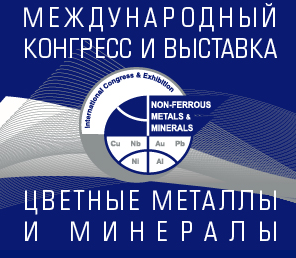ПЕРСПЕКТИВНЫЕ ТЕХНОЛОГИИ УДАЛЕНИЯ И УТИЛИЗАЦИИ СЕРОВОДОРОДА ИЗ МАЗУТА
Аннотация
Наличие сероводорода в топочном мазуте представляет экологическую опасность, так как при хранении, перекачке и транспортировке сероводород концентрируется в газовой фазе резервуаров, емкостей и цистерн, что при проведении операций слива-налива может привести к превышению его ПДК в воздухе, а также к созданию взрывоопасных смесей. Концентрация H2S в мазуте, производимом на нефтеперерабатывающих заводах, составляет 20-500 ppm, в то время как в товарном мазуте его содержание ограничивают до 10 ppm. Рассмотрены аналитические методы определения концентрации сероводорода в нефтепродуктах. Представлены промышленные и перспективные технологии снижения содержания H2S в мазуте, их основные достоинства и недостатки. Показаны возможности низкоэнергетических волновых технологий в облагораживании нефтяного сырья и нефтепродуктов и механизмы действия ультразвука и постоянного магнитного поля на нефтяные дисперсные системы. Извлекаемый из мазута сероводород ни по объемам, ни по концентрации не может быть использован как самостоятельное сырье для переработки в элементную серу в процессе Клауса и представляет собой побочный токсичный продукт. В то же время, сероводородсодержащие отходы могут быть ценным сырьем для получения широкого спектра полезных органических соединений (антиоксиданты, лекарственные препараты, пестициды, фунгициды). В процессах малотоннажной химии актуальны электрохимические процессы. В результате анодной или катодной активации сероводорода (алкантиолов) при комнатной температуре и атмосферном давлении образуется тиильный (алкилтиильный) радикал. Наряду с продуктами тиолирования органических соединений образуются также моно-, ди- и трисульфиды, обладающие более высокой биологической активностью и более низкой токсичностью по сравнению с тиолами. Конкурентноспособность электросинтеза весьма высока, его относят к процессам безотходного производства, так как в основе его заключена экологически ориентированная идея «зеленой химии».
Литература
Energy strategy of Russia until 2035. It is approved by the order of the Government of the Russian Federation of 31.10.2015. Date of the address 23.09.2019. https://mine-nergo.gov.ru/node/1920.
Kovbota A.A., Nasyrova L.A., Yagafarov G.G. Ecological aspects of processing hydrogen sulfide - the containing gas on oil processing the plant. Neftegaz. Delo. 2016. V. 14. N 1. P. 258-263 (in Russian).
Ezhov S., Tyrtov E. Russian oil processing: to survive. Oil&Gas J. Russia. 2019. N 3. P. 64-70 (in Russian).
Vetrova E.K., Morozov V.A., Dorogochinskaya V.A., Sysoeva O.V., Tonkonov B.P. Improvement of ecological properties of commodity fuel oil. KhTTM. 2011. N 2. P. 51-52 (in Russian). DOI: 10.1007/s10553-011-0273-4.
Tarakanov G.V., Tarakanov A.G., Kazakov A.A. The reasons for the presence of hydrogen sulfide in straightrun fuel oil. Neftepererab. Neftekhim. 2011. N 10. P. 20–21 (in Russian).
Popadin N.V., Nurakhmedova A.F., Prokhorov E.M., Tarakanov G.V. Some aspects of neutralization of hydrogen sulfide in residual hydrocarbon fuels. Vestn. AG-TU. 2014. N 2. P. 31−41 (in Russian).
Skvortsova N.K. New reference book by the chemist and technologist. Main properties of inorganic, organic and elementoorganichesky connections. SPb.: ANO NPO «Mir i semya». 2002. connections. SPb.: ANO NPO «Mir i semya». 2002. 1276 p. (in Russian).
Perepelichenko V.F., Rubenchik Yu.I., Shchugorev V.D., Geraskin V.I., Elfimov V.V. Metal and equipment for oil and gas containing hydrogen sulfide. M.: OOO "Nedra-Biznestsentr". 2001. 359 p. (in Russian).
Dorogochinskaya V.A., Tonkonogov B.P., Romanova O.V. Improving the production technology of commercial fuel oil with improved environmental properties. Abstracts of IX All-Russian scientific and technical. conf. "Actual problems of the development of the oil and gas complex of Russia." Moscow. 2012. P. 219 (in Russian).
Stupin A.V. Technical analysis of oil and oil products. Komsomolsk-on-Amur: KnGTU. 2010. 96 p. (in Russian).
Dai, B., Jones, C., M., Pearl M., Pelletier M., Myrick M. Hydrogen Sulfide Gas Detection via Multivariate Optical Computing. Sensors. 2018. N 18. P. 2006-2012. DOI: 10.3390/s18072006.
Wall K.J. A Review of Tunable Diode Laser Absorption Spectroscopy (TDLAS). Technical Report. January. 2006. DOI: 10.13140/RG.2.2.19384.65280.
Lobachev A.L., Nikitina M.N., Fomina N.V. Hydrogen sulphide definition in commodity oil fuel oil the spektrofotometrys titrimetrii and methods. Modern problems and ways of their solution in science, transport, production and education. 2012. https://sworld.com.ua/konfer29/562.pdf.
Kimble W. Measuring H2S in crude oil for quality control & transportation safety. Date of the address 24.09.19. https://liquidgasanalyzers.com/wp-content/uploads/2015/ 03/K-205-ISA-AD-2015-Measure-in-Crude-Oil-for-Quality-Control-and-Transportation-Safety.pdf.
Sen A., Albarella D., Carey J., Kim P., McNamara W. Low-cost colorimetric sensor for the quantitate detection of gaseous hydrogen sulfide. Sensor Actuators B: Chem. 2008. 134 (1). P.234-237. DOI: 10.1016/j.snb.2008.04.046.
Heshka N., Hager D. Measurement of H2S in Crude Oil using multidimensional Gas Chromatography, deans switching and sulfur-selective detection. J. Vis. Exp. 2015. V. 106. P. 53416. DOI: 10.3791/53416.
Berberova N.T., Shinkar E.V., Akhmedova Yu.I. Investigation of the effect of oxidizing agents on the decomposition of polysulfanes in gas sulfur. Vestn. AGTU. 2007. V. 6. N 41. P. 8-13 (in Russian).
Nechaeva D., Shishov A., Ermakov S., Bulatov A. A paper-based analytical device for the determination of hydrogen sulfide in fuel oils based on headspace liquid-phase microextraction and cyclic voltammetry. Talanta. 2018. V. 183. P. 290-296. DOI: 10.1016/J.talanta.2018.02.074.
Metod of express analysis of content of hydrogen sulfide in oil. Date of the address 24.09.2019. https://helpiks.org/7-49001.html (in Russian).
Nikitin A.A., Karasev E.N., Dutlov E.V., Piskunov A.V., Borisanov D.V. The choice of optimal technologies for reduction of hydrogen sulfide in fuel oil. Neftepererab. Neftekhim. 2014. N 9. P. 19-23 (in Russian).
Sakhabutdinov R.Z. Anufriev A.A., Shatalov A.N., Shishlov D.D. Improving physical methods for removing hydrogen sulfide from oil. Expozitsiya Neft’. Gaz. 2017.
P. 39-41 (in Russian).
Nikitin A.A., Karasev E.N., Dutlov E.V., Piskunov A.V., Borisanov D.V. Removal of a hydrogen sulfide from fuel oil on JSC Slavneft of YaNOS. Delovaya Slava Rossii. 2014. N 3. P. 44-45 (in Russian).
Grigoryan L.G., Ignatenkov Yu.I., Ivanyakov S.V., Sidorenko A.A. Resource-saving installation of preparation of oil with use of "soft steam stripping" technology. Neft’. Gaz. Novatsii. 2017. N 9. P. 58-61 (in Russian).
Gilaev G.G., Rtishchev A.V., Vdovenko A.A., Grigoryan L.G., Ingnatenkov Yu.I. A new conceptual approach to the neutralization of hydrogen sulfide by physical methods. Neft’. Gaz. Novatsii. 2017. N 10 (202). P. 78-81 (in Russian).
Sitiikova F.V., Sadretdinov I.F., Alyabiev A.S., Kovin A.S., Kladov V.S. Hydrogen sulfide absorbers of series Additop – the effective decision of decrease in the hydrogen sulfide content in fuels. Electron. Sci. J. “Oil and Gas Business”. 2012. N 2. Р. 490-500.
Elshiekh T.M., Elmawgoud H.A., Khalil S.A., Alsabagh A.M. Optimum injection dose rate of hydrogen sulfide scavenger for treatment of petroleum crude oil. Egypt. J. Petroleum. 2016. N 25. P. 75-78. DOI: 10.1016/j.ejpe.2015.03.015.
Mumrikov M.V., Tsypyshev O.Yu., Sapozhnikov Yu.E., Laptev A.B., Bugay D.E. Hydrogen sulfide absorbers based on azometine compounds. Bashkir. Khim. Zhurn. 2012. V. 19. N 1. P. 195-198 (in Russian).
Elmawdoud Н.A., Elshiekh T.M., Khalil S.A., Alsabagh A.M., Tawfik M. Modeling of hydrogen sulfide removal from Petroleum production facilities using H2S scavenger. Egypt. J. Petroleum. 2015. N 24. P.1 31-137. DOI: 10.1016/j.ejpe.2015.05.003.
Kendreck G. Manage hydrogen sulfide Hazards with chemical scavengers. Hydrocarbon Proc. 2014. December. P. 73-76.
Khuramshin R.T., Ismagilov F.R., Vishnevskaya E.E., Isichenko I.V., Rakhmanov E.V. About necessity of transition to new type of absorbers of hydrogen sulfide and mercaptans in oil, oil products and gas. Mir Nefteproduktov. 2018. N 3. P. 4-10 (in Russian).
Vetrova T.K., Morozov V.A., Dorogochinskaya V.A., Romanova O.V., Tonkonogov B.P. Efficiency of various types of absorbers of hydrogen sulfide in fuel oil. KhTTM. 2011. N 6. P. 25-26 (in Russian). DOI: 10.1007/s10553-012-0322-7.
Vetrova T.K., Morozov V.A., Dorogochinskaya V.A., Sysoyeva O.V. The current state of production of fuel oil with the improved ecological properties. Current problems of development of an oil and gas complex of Rus-sia. Сollection of articles. VIII All-Russian scientific and technical conference. Moscow. 2010. P. 261 (in Russian).
Rajagopal K., Lacerda R., Slobodcicov I. Campagnolo Eu. Modeling and simulation of hydrogen sulfide removal from petroleum production lines by chemical scavengers. Chem. Eng. Comm. 2009. 196. P. 1237–1248. DOI: 10.1080/00986440902832100.
Amosa M.K., Mohammed I.A., Yaro S.A. Sulphide scavengers in oil and gas industry – A Review. Nafta. 2010. N 61 (2). P. 85-92.
Nasybullina A.Sh., Rakhmatullina G.M., Myasoedova M.N., Zakharchenko S.I., Skvortsov I.V., Penskoy D.E. The experience of using the bactericide snpkh-1517a to remove hydrogen sulfide and to suppress sulfate-reducing bacteria in the fields of Krasnodarneftegaz LLC. Neftepromysl. Delo. 2011. N 4. P. 47-50 (in Russian).
Lipantyev P.E. Tutubalina V.P. Influence of sulphurous connections on operational characteristics of N1100 fuel oil. Probl. Energet. 2012. N 1-2. P. 172-175 (in Russian).
Dzheksenov M.K, Ismagilova Z.F., Ismagilov F.R. The study of oil purification from hydrogen sulfide and mercaptans by the combined method. Neftepererab. Neftekhim. 2018. N 11. P. 21-25 (in Russian).
Kazakov A.A., Tarakanov G.V., Ionov N.G. Desulphuration of straight-run fuel oil the ozonized air. Tekhnol. Nefti Gaza. 2013. N 2(85). P. 23-27 (in Russian).
Hosseini H. Novel methods of Dezulfurization of fuel oils. Internat. Scholar. Sci. Res. & Innovat. 2012. N 6(11). Р. 1072-1074.
Solodova N.L., Fakhrutdinov R.Z., Ganiyeva T.F. Wave technologies in oil production and oil processing. Kazan: KNITU. 2012. 84 p. (in Russian).
Hielscher Ultrasonic Auxiliary Oxidative Desulfurization. Date of the address 24.09.2019. https://www.hielscher.com/ ru/oil_desulfurization_01.htm.
Adebayo Johnson O., Chioma Affam A. Petroleum sludge treatment and disposal: A review. Environ. Eng. Res. 2019. V. 24. N 2. P. 191-201. DOI: 10.4491/eer.2018.134.
Hasan S.W., Ghannam M.T., Esmail N. Heavy crude oil viscosity reduction and rheology for pipeline transportation. Fuel. 2010. V. 89. P. 1095-1100. DOI: 10.1016/j.fuel.2009.12.021.
Guangji H., Jianbing L., Guangming Z. Recent development in the treatment of oily sludge from petroleum industry. J. Hazard. Mater. 2013. V. 261. Р. 470–490. DOI: 10.1016/j.jhazmat.2013.07.069.
Anufriev R.V. Volkova G.I., Yudina N.V. The effect of ultrasound on the composition and properties of paraffin highly resinous oil. Neftekhim. 2016. V. 56. N 1. P. 454-460 (in Russian).
Zhanakhova A.N., Negutorov N.V., Pykhova N.V., Dyskina B.Sh. Features of ultrasonic splitting of thermally expanded graphite. Izv. Vyssh. Uchebn. Zaved. Khim. Khim. Tekhnol. [Russ. J. Chem. & Chem. Tech.]. 2020. V. 63. N 2. P. 45-51. DOI:10.6060/ivkkt.20206302.6073.
Pivovarova N.A. Advantages of low-energy wave preparation of hydrocarbons / Collection of VII International Industrial and Economic Forum “Strategy of Unification: Solving Actual Problems of Oil and Gas and Petrochemical Complexes at the Present Stage” December 11–12. 2014. Moscow: RGUNG. P. 33-35 (in Russian).
Pivovarova N.A., Grazhdantseva A.S., Vlasova G.V., Kolosov V.M. Magnetic-field effects on atmospheric distillation of a stable gas condensate. Chem. Technol. Fuel. Oil. 2018. V. 54 (1). Р. 1–7. DOI: 10.1007/s10553-018-0890-2.
Pivovarova N.A. Effective magnetic technologies for field preparation and transportation of oil and gas. Neft. Gaz. Novatsii. 2018. N 5. P.13-18 (in Russian).
Unger F.G. Fundamental and applied research results of oil dispersed systems. Ufa: Izd-vo GUP INHP RB. 2011. 264 p. (in Russian).
Pivovarova N.A. The nature of the influence of a constant magnetic field on oil disperse systems. Neftepererab. Neftekhim. 2004. N 10. P. 20-26 (in Russian).
Chumakov E.A., Vaganov R.A., Buryukin F.A., Mel’chakov D. A. Improving the reliability of the plant production of sulfur. J. Siber. Fed. Univ. Chem. 1998. V. 3. N 10. P. 437-446. DOI: 10.17516/1998-2836-0039.
Shklyar R.L., Mokin VA., Golubeva I.A. Gas sulfur: Problems and solutions. Neftegazokhimiya. 2016. N 2. P. 23-29 (in Russian). DOI: 10.24411/2310-8266-2019-10108.
Gruzdev A.A. Offer on modernization of process of Claus. Molodoy Uchenyy. 2018. N 15. P. 1-2 (in Russian).
Chumakov E.A., Chumakov A.A. Improving the productivity and efficiency of the Klaus process, the installation of sulfur-sulfur-containing gas utilization and production of granular sulfur. http://elib.sfu-kras.ru/handle/2311/21192 (in Russian).
Podshivalin A.V. Modern production technologies of element sulfur. Neftegaz Delo. 2006. V. 4. N 1. P. 231-234 (in Russian).
Mokhatab S., William A. Poe, John Y. Mark, Kendreck G. Handbook of natural Gas Transmission and Processing. Elsavier. 2015. P. 303-314. DOI: 10.1016/B978-0-12-801499-8.00012-2.
Beletskaya I.P., Kustov L.M. Catalysis as an important tool of green chemistry. Uspekhi Khim. [Russ. Chem. Rev.]. 2010. V. 79. N 6. P. 441-461. DOI: 10.1070/RC2010v079n06ABEH004137.
Moiseev I. Green chemistry: development jectory. Uspekhi Khim. [Russ. Chem. Rev.]. 2013. V. 82. N 7. P. 616-623. DOI: 10.1070/RC2013v082n07ABEH004393.
Gultayi V.P., Krivenko A.G., Tomilov A.P. Electro-chemistry of organic compounds at the beginning of the XXI century. Collection of articles. M.: Sputnik + Com-paniya. 2008. 578 p. (in Russian).
Berberova N.T., Shinkar E.V., Smolyaninov I.V., Okhlobystin A.O. The involvement of hydrogen sulfide, thiols and polysulfanes in the synthesis of organic sulfur compounds. Rostov-on-Don: Izd-vo YuNTs RAN. 2009. 256 p. (in Russian).
Shinkar E.V., Okhlobystin A.V., Koldayeva Yu.Yu., Vasilyeva E.A., Petrova N.V., Smolyaninov I.V., Berberova N.T. Methods of "green chemistry" in the utilization of sulfur-containing components of a hydrocarbon mixture. Zaschita Okruzh. Sredy Neftegaz. Complek. 2011. N 10. P. 67-71 (in Russian).
Berberova N.T., Shinkar E.V., Smolyaninov I.V., Okhlobystina A.V. Hydrogen sulfide and alkanethiols in the synthesis of biologically active organic sulfur compounds. Rostov-on-Don: Izd-vo YuNTs RAN. 2016. 260 p. (in Russian).
Shinkar E.V., Shvetsova A.V., Sediki D.B., Berberova N.T. Redox activation of hydrogen sulfide in the reaction with cycloheptane. Elektrokhim. [Russ. J. of Electrochem.]. 2015. V. 51. N 11. P. 1182-1189. DOI: 10.1134/S1023193515110178.
Berberova N.T., Shinkar E.V., Smolyaninov I.V., Pashchenko K.P. Redox-mediators of hydrogen sulfide oxidation in reactions with cycloalkanes. Doklady Akad. Nauk. [Dokl. Chem.]. 2015. V. 465. N 6. P. 1-4. DOI: 10.1134/S0012500815120058.
Okhlobystin A.O., Okhlobystina A.V., Shinkar E.V., Berberova N.T., Eremenko I.L. Electromediators in synthesis of sulfur organic compounds based on hydrogen sulfide and thiols. Doklady Akad. Nauk. [Dokl. Chem.]. 2010. V. 435. P. 302-306. DOI: 10.1134/S001250081011008X.
Berberova N.T., Smolyaninov I.V., Shinkar E.V. Electrosynthesis of polysulfides R2Sn (n=2-4) based on cycloalkanes and S8 via bromide-mediated oxidation of H2S. Inter. J. Electrochem. Sci. 2019. V. 14. N 1. P. 531-541. DOI: 10.20964/2019.01.15.
Berberova N.T. Shinkar E.V. Smolyaninov I.V., Shvet-sova A.V., Sediki D.B. Electrosynthesis of biologically active dicycloalkyl di- and trisulfides involving an H2S–S8 redox system. Izv. RAN. [Russ. Chem. Bullet.]. 2018. V. 67. N 1. P. 108-113. DOI: 10.1007/s11172-018-2044-4.
Berberova N.T., Shinkar E.V., Smolyaninov I.V., Kuzmin V.V., Sediki D.B., Shevtsova A.V. 3,6-Di-tertbutyl-o-seminquinolate complexes Cr (III), In (III) as redox-mediators of hydrogen sulfide oxidation in reactions with cycloalkanes. Koord. Khim. [Russ. J. of Coord. Chem.]. 2017. V. 43. N 9. P. 540-544. DOI: 10.1134/S107032841707003X.
Shinkar’ E.V., Kudryavtsev D.A., Pashchenko K.P., Berberova N.T., Okhlobystina A.V. Thiolation of cycloalkenes C5, C6 by redox-activation of hydrogen sulfide. Mendeleev Commun. 2017. V. 27. P. 1-3. DOI: 10.1016/j.mencom.2017.03.025.
Berberova N.T., Shinkar' E.V., Smolyaninov I.V., Abdulaeva V.F. Anodic activation of hydrogen sulfide in the reaction with cyclopentane. Zhurn. Obsch. Khim. [Russ. J. of Gener. Chem.]. 2015. V. 85. N 4. P. 6997-699. DOI: 10.1134/S1070363215040416.
Zhao J., Fang H., Han J., Pan Y., Li G. Metal-free preparation of cycloalkyl aryl sulfides via ditert-butyl peroxidepromoted oxidative C(sp3)h bond thiolation of cycloalkanes. Adv. Synth. Catal. 2014. V. 356. N 11(12). P. 2719-2724. DOI: 10.1002/adsc.201400032.
Sakhabutdinova G.N., Raskil’dina G.Z., Meshcheryakova S.A., Shumadalova A.V., Bortsova Yu.L., Kuzmina U.Sh., Zlotsky S.S., Sultanova R.M. Antioxidant and cytotoxic activity of a series of O- and S-containing macrocycles. Izv. Vyssh. Uchebn. Zaved. Khim. Khim. Tekhnol. [Russ. J. Chem. & Chem. Tech.]. 2020. V. 63. N 3. P. 82-87. DOI: 10.6060/ivkkt.20206303.6118.
Feng M., Tang B., Liang S.H., Jiang X. Sulfur containing scaffolds in drugs. Curr. Top. Med. Chem. 2016. V. 16. N 11. P. 1200-1216. DOI: 10.2174/1568026615666150915111741.
Berberova N.T., Shinkar E.V., Smolyaninov I.V., Osipova V.P., Burmistrova D.A. Synthesis and biological activity of organic mono-, di- and polysulfides. Monograph. Rostov-on-Don: Izd-vo YuNTs RAN. 2019. 268 p. (in Russian).
Budnikova Yu.G. Modern organic electrosynthesis. Principles, research methods and practical applications. M.: INFRA-M. 2016. 440 p. (in Russian).



















